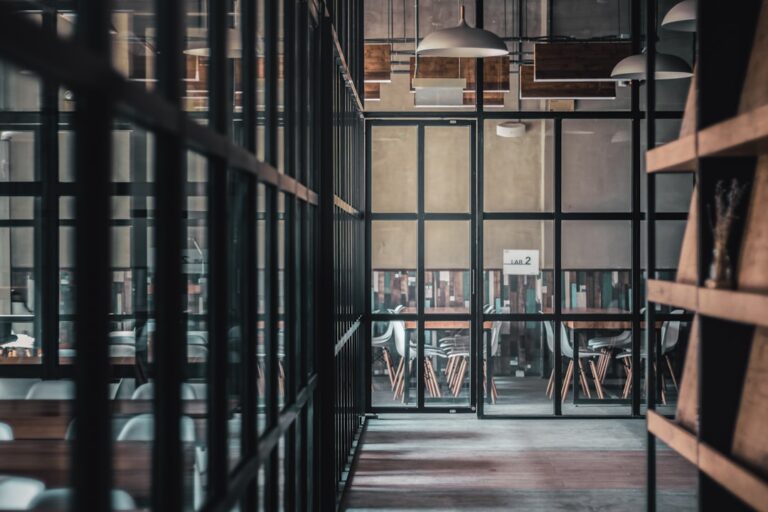Declutter Your Home: Quick Tips for Success

Decluttering your living space offers numerous benefits for physical and mental well-being. A clutter-free environment can reduce stress and anxiety, creating a sense of calm and tranquility. This can lead to improved mental clarity and focus, enhancing productivity and efficiency in daily life.
Decluttering also positively impacts physical health by reducing the risk of accidents and injuries due to fewer obstacles. It can improve air quality by minimizing dust and allergen accumulation, which may otherwise lead to respiratory issues. The process of decluttering can yield financial benefits.
Selling or donating unused items can generate extra income or provide tax deductions. Being more mindful of possessions can help avoid unnecessary purchases, leading to long-term savings. Additionally, a clean and organized home can enhance social life by making the space more inviting for guests, potentially increasing social gatherings and interactions.
This can also boost self-esteem and confidence as individuals take pride in their living space and feel more comfortable inviting others into it.
Key Takeaways
- Decluttering can lead to a more organized and stress-free living environment
- Setting specific and achievable goals is crucial for successful decluttering
- Sorting and categorizing belongings helps in making decisions about what to keep and what to discard
- Creating a system for staying organized, such as using labels and storage bins, can help maintain a clutter-free space
- Utilizing storage solutions like shelves and under-bed storage can maximize space and keep belongings organized
Setting Clear Goals for Decluttering
Identify Areas that Need Attention
When embarking on a decluttering journey, it’s essential to identify the areas in your home that need decluttering the most. This could be a specific room, such as the kitchen or bedroom, or it could be a category of items, such as clothes or books.
Set Specific and Realistic Goals
Once you have identified the areas that need attention, set specific goals for each one. For example, you might aim to declutter and organize your kitchen cabinets within a week, or to go through your wardrobe and donate any clothes you haven’t worn in the past year. It’s also important to set realistic timelines for your decluttering goals.
Break Down Goals into Manageable Tasks
Rome wasn’t built in a day, and decluttering your entire home will likely take time and effort. Break down your goals into smaller, manageable tasks that you can tackle one at a time. This will prevent you from feeling overwhelmed and help you to stay focused and motivated.
Stay Motivated with Rewards
Additionally, consider setting rewards for yourself as you achieve each decluttering goal. This could be something small, like treating yourself to a movie or a nice dinner, or something larger, like a weekend getaway once you’ve decluttered your entire home. Having something to look forward to can help keep you motivated and make the decluttering process more enjoyable.
Sorting and Categorizing Your Belongings

Once you have set your decluttering goals, it’s time to start sorting through your belongings. Begin by taking everything out of the area you are decluttering and sorting it into categories. For example, if you are decluttering your closet, you might create categories for tops, bottoms, dresses, shoes, and accessories.
As you go through each item, ask yourself if it is something you use regularly, if it brings you joy, and if it serves a purpose in your life. If the answer is no, then it’s time to let go of that item. As you sort through your belongings, it can be helpful to create three piles: keep, donate/sell, and discard.
The keep pile should only include items that you truly love and use on a regular basis. The donate/sell pile should include items that are still in good condition but are no longer needed or wanted. These items can be sold online or donated to a local charity.
The discard pile should include items that are no longer usable or in poor condition and need to be thrown away. By categorizing your belongings in this way, you can make the decluttering process more efficient and organized.
Creating a System for Staying Organized
| Metrics | Data |
|---|---|
| Number of tasks | 50 |
| Time spent organizing | 2 hours per week |
| Number of completed tasks | 40 |
| Number of overdue tasks | 5 |
Once you have decluttered and sorted through your belongings, it’s important to create a system for staying organized in the future. This could involve investing in storage solutions such as bins, baskets, shelves, and drawer organizers to keep your belongings neatly stored and easily accessible. Consider using labels to clearly identify the contents of each storage container, making it easier to find what you need when you need it.
Additionally, make sure to designate specific areas for different categories of items to ensure that everything has a proper place. It’s also important to establish daily habits that will help you maintain an organized living space. This could include taking a few minutes each day to tidy up and put things back in their designated places, rather than letting clutter accumulate over time.
Consider implementing a “one in, one out” rule, where for every new item you bring into your home, you commit to getting rid of an old item. This can help prevent clutter from building up again in the future.
Utilizing Storage Solutions to Maximize Space
In order to maintain an organized living space, it’s important to utilize storage solutions that maximize the available space in your home. This could involve using vertical storage options such as wall-mounted shelves or hanging organizers to make use of empty wall space. Consider investing in furniture with built-in storage, such as ottomans with hidden compartments or beds with drawers underneath.
This can help to reduce clutter and make the most of limited space in smaller homes or apartments. Another effective storage solution is to make use of multi-functional furniture that serves more than one purpose. For example, a coffee table with built-in storage can provide a place to store books, magazines, and other items while also serving as a functional piece of furniture in your living room.
Look for opportunities to maximize storage in every room of your home, from the kitchen to the bathroom to the bedroom.
Establishing a Routine for Maintenance

Establishing a Maintenance Routine
Once you have decluttered and organized your living space, it’s essential to establish a routine for maintenance to ensure that clutter doesn’t build up again over time. This could involve setting aside time each week for a quick tidy-up of your home, focusing on putting things back in their designated places and keeping surfaces clear of clutter.
Creating a Cleaning Schedule
Consider creating a cleaning schedule that includes tasks such as dusting, vacuuming, and organizing specific areas of your home on a regular basis. This will help maintain a sense of order and prevent clutter from accumulating.
Regularly Reassessing Your Belongings
It’s also important to regularly reassess your belongings and make adjustments as needed. As time goes on, you may acquire new items or find that certain belongings are no longer serving a purpose in your life. By regularly evaluating your possessions and letting go of things that no longer bring value or joy, you can prevent clutter from accumulating again in the future.
Seeking Support and Accountability for Long-Term Success
Finally, seeking support and accountability from friends, family, or professional organizers can be instrumental in achieving long-term success with decluttering and organization. Consider enlisting the help of a friend or family member to assist you with decluttering specific areas of your home or providing moral support throughout the process. You could also join online communities or social media groups dedicated to decluttering and organization for inspiration and motivation.
If you find that maintaining an organized living space is challenging on your own, consider hiring a professional organizer who can provide guidance and support tailored to your specific needs. A professional organizer can help you develop personalized systems for staying organized and offer ongoing support to help you maintain a clutter-free environment. In conclusion, decluttering and organizing your living space can have numerous benefits for your physical, mental, and emotional well-being.
By setting clear goals, sorting through your belongings, creating systems for staying organized, utilizing storage solutions, establishing maintenance routines, and seeking support and accountability, you can achieve long-term success with maintaining a clutter-free home. With dedication and effort, you can create a living environment that promotes peace, productivity, and overall happiness in your daily life.
If you’re looking for more life hacks to improve your home, check out this article on best life hacks for home. It offers a variety of tips and tricks for organizing and improving your living space, which can complement the quick tips for decluttering your home. Whether you’re looking to streamline your cleaning routine or create a more functional layout, these life hacks can help you achieve a more organized and enjoyable home environment.
FAQs
What is decluttering?
Decluttering is the process of organizing and getting rid of unnecessary items in your home to create a more organized and functional living space.
Why is decluttering important?
Decluttering is important because it can help reduce stress, improve productivity, and create a more peaceful and organized living environment. It can also make it easier to find and access the things you need.
How can I start decluttering my home?
You can start decluttering your home by setting aside time to go through each room and identify items that you no longer need or use. You can then decide whether to donate, sell, or discard those items.
What are some quick tips for decluttering my home?
Some quick tips for decluttering your home include setting small, achievable goals, using storage solutions to organize items, and regularly decluttering to prevent accumulation of unnecessary items.
How can I maintain a clutter-free home?
To maintain a clutter-free home, you can establish a regular cleaning and decluttering routine, avoid impulse purchases, and regularly assess your belongings to ensure they are still needed and used.






